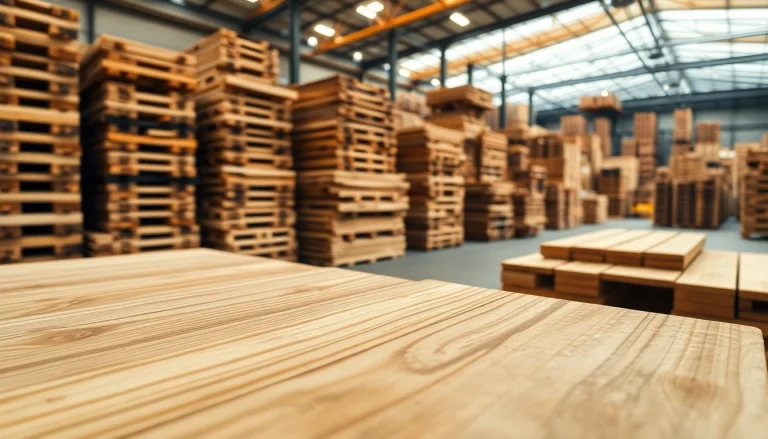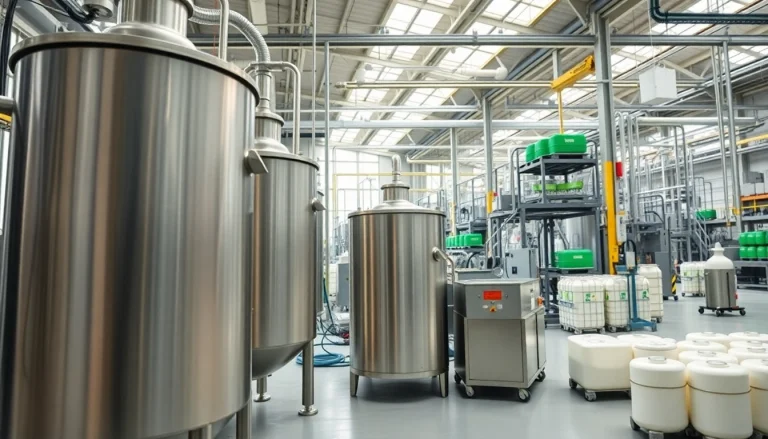Understanding Epoxy Prepregs
What are Epoxy Prepregs?
Epoxy prepregs are a class of composite materials characterized by fibers that have been pre-impregnated with a liquid epoxy resin. These materials serve as a vital component in various advanced manufacturing processes, particularly where high performance and durability are required. The “prepreg” term is derived from the process of pre-impregnation, where reinforcing fibers such as carbon fiber or fiberglass are infused with a specific resin system, resulting in a semi-cured product. This technique essentially eliminates the need for additional resin application during the manufacturing phase, leading to increased efficiency and reduced waste. The properties of epoxy prepregs make them ubiquitous in demanding sectors like aerospace, automotive, and sports equipment manufacturing.
Characteristics and Benefits of Epoxy Prepregs
The advantages of using epoxy prepregs are numerous, arising largely from their unique chemical and physical properties. The cure process typically involves heat, which allows for better control over the desired material properties. Key characteristics include:
- High strength-to-weight ratio: Epoxy prepregs provide remarkable strength while maintaining a low weight, which is crucial in applications like aerospace where every gram counts.
- Thermal resistance: These materials exhibit excellent thermal stability, which allows them to perform well under elevated temperatures.
- Low moisture absorption: The epoxy matrix is less permeable, ensuring that the properties remain stable over time even in varying environmental conditions.
- Customization: The formulation of the resin and the choice of reinforcing fibers can be tailored to meet specific performance requirements.
These characteristics translate into benefits that include improved performance, longer service life, and lower long-term costs due to reduced maintenance and replacement needs. Manufacturers of epoxy prepregs often leverage these properties to create products that not only meet but exceed industry standards.
Common Applications of Epoxy Prepregs
Epoxy prepregs are employed across a range of industries, each leveraging their unique properties for specific applications. Some of the most common include:
- Aerospace: In this sector, epoxy prepregs are used for structural components that require both light weight and high strength, ensuring that aircraft can operate efficiently.
- Automotive: Demand for lightweight, fuel-efficient vehicles has led to increased use of epoxy prepregs in components like body panels and structural elements.
- Sports Equipment: High-performance sporting goods, such as bicycles and golf clubs, utilize epoxy prepregs to balance durability with minimal weight, enhancing athletic performance.
- Marine: Boat manufacturing benefits from the moisture resistance and strength of epoxy prepregs, making them ideal for hulls and other structures subjected to harsh environmental conditions.
Types of Epoxy Prepregs
Carbon Fiber Epoxy Prepregs
Carbon fiber epoxy prepregs are recognized for their exceptional mechanical properties, including stiffness, strength, and low density. These prepregs are widely used in applications that demand high structural integrity and minimal weight. Industries such as aerospace and automotive leverage carbon fiber prepregs for critical components, ranging from wing structures in aircraft to high-performance automotive parts that contribute to overall performance and efficiency. The cost of carbon fiber prepregs is generally higher than alternatives, but the return on investment is seen in the long-term advantages afforded in application.
Glass Fiber Epoxy Prepregs
Glass fiber epoxy prepregs offer a cost-effective alternative to carbon fiber, making them suitable for a broader range of applications where high strength is essential but budget constraints are a consideration. They are characterized by good tensile strength and impact resistance. Commonly found in construction, automotive, and consumer goods, glass fiber epoxy prepregs are often used for parts where mechanical loads are a concern, yet where ultimate performance may not need to reach the heights of carbon fiber applications. Examples include boat hulls, automotive components, and some sporting equipment.
Specialty Epoxy Prepregs
Specialty epoxy prepregs are designed for specific applications where unique properties are required. This classification can include materials that are tailored for high temperature resistance, enhanced chemical resistance, or even flame-retardant properties. These prepregs are particularly suited to applications in industries such as electronics, military, and specialty automotive sectors. Each batch of specialty prepregs is formulated with the end goal in mind, often resulting in highly innovative and application-specific material solutions.
Manufacturing Processes Involving Epoxy Prepregs
Preparation Techniques for Epoxy Prepregs
The preparation of epoxy prepregs involves a precision process that begins with selecting the appropriate reinforcement fibers and resin system. Here are the key steps involved:
- Fiber Selection: Manufacturers must choose the type of fiber (carbon, glass, or aramid) based on the specific performance criteria required for the end product.
- Matrix Formulation: The resin system is formulated, often incorporating additives to optimize performance characteristics such as curing speed, viscosity, and temperature stability.
- Impregnation Process: The fibers are passed through a resin bath, where they are saturated with the liquid epoxy, ensuring an even distribution. This can be performed using methods such as roll-to-roll, solvent dip, or automated impregnation systems.
- Curing Preparation: The prepregs are laid out in a controlled environment to remove excess resin and reduce solvent content before the curing process.
Curing Processes
The curing process is critical for the development of the final properties of epoxy prepregs. Curing typically involves the application of heat, which initiates a chemical reaction that hardens the resin. Key considerations include:
- Temperature Management: Different prepregs require specific temperature profiles for optimal curing. Maintaining the correct range ensures good adhesion and minimizes defects.
- Pressure Application: In many manufacturing processes, pressure is applied during curing to ensure good fiber-to-resin contact, which enhances mechanical properties.
- Cure Cycle Duration: The time required for curing varies, and optimizing this process is crucial to achieving the desired material characteristics without extending production times unnecessarily.
Quality Control Measures
Quality assurance in the manufacturing of epoxy prepregs is essential to ensure that products meet stringent performance standards. Key control measures include:
- Material Testing: Conducting tests like tensile strength, shear strength, and thermal stability assessments help gauge the performance of prepregs before they are put into service.
- In-Process Monitoring: Process variables, such as temperature and pressure during curing, should be continuously monitored to detect deviations that could lead to product failure.
- Inspection Protocols: Prepregs should undergo visual and dimensional checks to ensure compliance with specifications and detect any defects that might affect performance.
Advantages of Using Epoxy Prepregs
Performance Benefits
Epoxy prepregs provide unparalleled performance advantages, which can be classified into several key categories:
- Enhanced Mechanical Properties: The combination of high tensile strength and low weight results in products that outperform traditional materials.
- Resistance to Environmental Factors: The epoxy matrix offers resistance to moisture, chemicals, and UV degradation, making prepregs ideal for outdoor applications and harsh environments.
- Dimensional Stability: Epoxy prepregs maintain their shape and dimensions during processing, reducing warping and distortion common with liquid resin systems.
Cost-Effectiveness
While the initial investment in epoxy prepregs may be higher than other materials, the long-term cost benefits are substantial:
- Reduced Material Waste: The precise control in the amount of resin used leads to less waste and cost savings over time.
- Lower Maintenance Costs: The durability and performance reliability of epoxy prepregs typically mean lower maintenance needs and less frequent replacements.
- Manufacturing Efficiency: Preparation techniques that streamline production processes lead to quicker lead times and increased productivity.
Sustainability Considerations
As sustainability becomes a critical concern across industries, epoxy prepregs contribute positively:
- Recyclability: Though traditionally difficult to recycle, newer formulations of epoxy prepregs are being developed that facilitate easier recycling.
- Resource Efficiency: The high strength properties of epoxy prepregs mean that less material is needed to achieve the same performance compared to traditional materials.
- Longer Lifecycle: The durability of epoxy prepregs translates to extended product lifespans, further enhancing resource conservation.
Future Trends in Epoxy Prepregs
Technological Advancements
The field of epoxy prepregs is evolving with significant technological innovations. Research continues to focus on:
- Smart Materials: Incorporating sensors and responsive elements into prepregs is leading to the development of smart composite structures that can provide real-time monitoring of stress and strain.
- Advanced Curing Techniques: New curing approaches, such as ultraviolet light curing and microwave processing, promise to enhance production speeds and efficiency.
- Biobased Resins: With a growing focus on sustainability, there is an increasing push to develop epoxy prepregs utilizing bio-derived resins that reduce reliance on petroleum resources.
Market Growth and Opportunities
The market for epoxy prepregs is poised for significant growth, driven by trends in aerospace, automotive, and renewable energy industries. Emerging opportunities include:
- Expanding Applications: New areas, such as wind energy and electric vehicles, are catalyzing demand for lightweight and durable materials.
- Global Market Expansion: Increased manufacturing capabilities in developing regions is fostering a demand surge for high-performance composites.
- Customization Trends: As industries increasingly seek specialized solutions, tailored prepreg offerings will become more critical for manufacturers.
Impacts on Industry Standards
As epoxy prepregs gain traction, impacts on industry standards and regulations will be noteworthy:
- Enhanced Testing Protocols: The rise in use will necessitate rigorous testing requirements to ensure safety and reliability across applications.
- Quality Benchmarking: The landscape will be shaped by the establishment of new standards that govern the production of high-performance composites.
- Collaboration and Innovation: Increased partnerships among material scientists, manufacturers, and regulatory bodies will drive innovation and standardization efforts.








